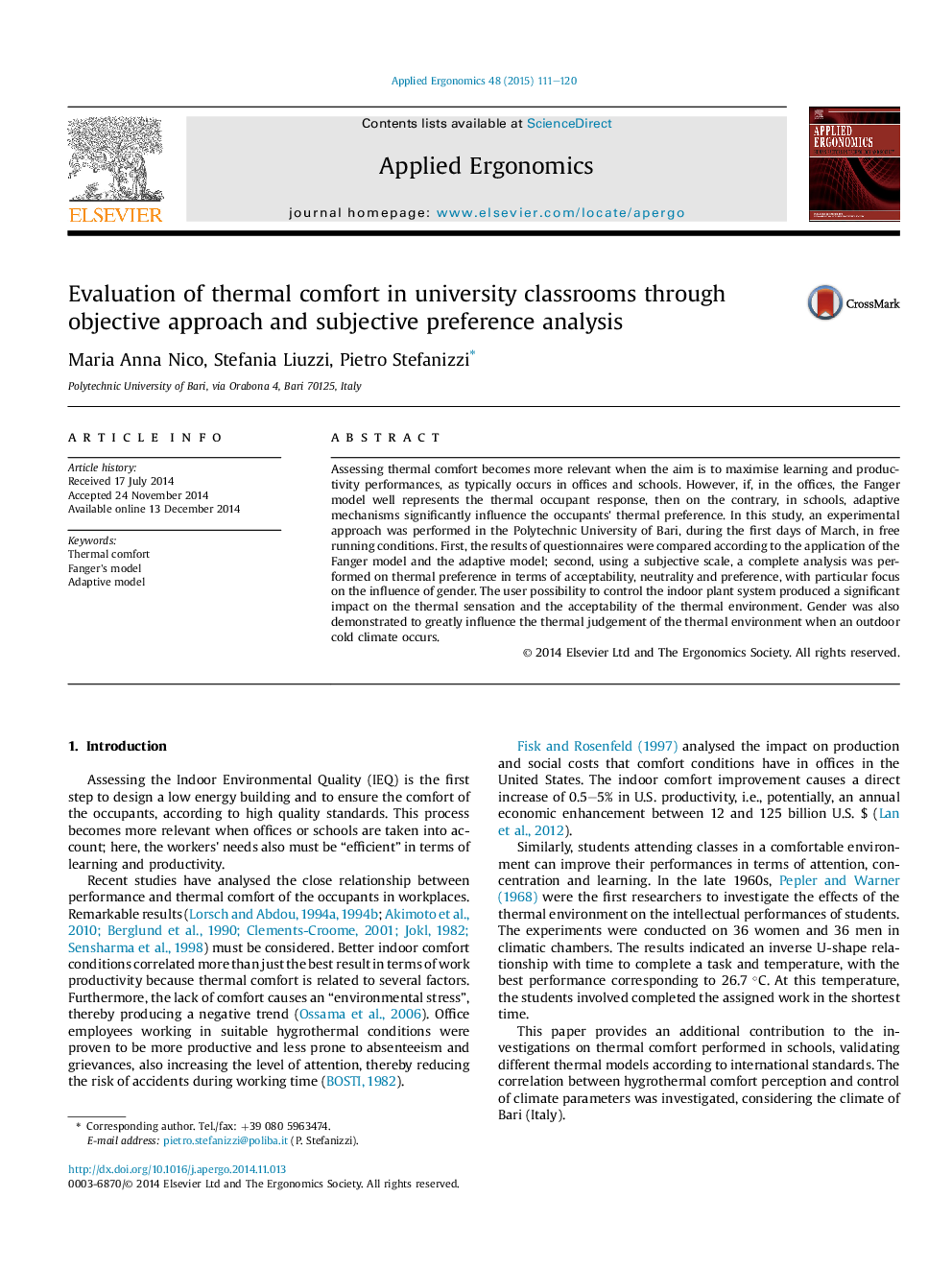| Article ID | Journal | Published Year | Pages | File Type |
|---|---|---|---|---|
| 550032 | Applied Ergonomics | 2015 | 10 Pages |
•Fanger and Adaptive models are compared to occupants' questionnaires results.•Analysis on thermal preference is performed, in terms of acceptability, neutrality and preference.•Gender influence and relationship between microclimate control and thermal sensation has been investigated.•A different thermal response can be appreciated comparing women and men thermal response.
Assessing thermal comfort becomes more relevant when the aim is to maximise learning and productivity performances, as typically occurs in offices and schools. However, if, in the offices, the Fanger model well represents the thermal occupant response, then on the contrary, in schools, adaptive mechanisms significantly influence the occupants' thermal preference. In this study, an experimental approach was performed in the Polytechnic University of Bari, during the first days of March, in free running conditions. First, the results of questionnaires were compared according to the application of the Fanger model and the adaptive model; second, using a subjective scale, a complete analysis was performed on thermal preference in terms of acceptability, neutrality and preference, with particular focus on the influence of gender. The user possibility to control the indoor plant system produced a significant impact on the thermal sensation and the acceptability of the thermal environment. Gender was also demonstrated to greatly influence the thermal judgement of the thermal environment when an outdoor cold climate occurs.
